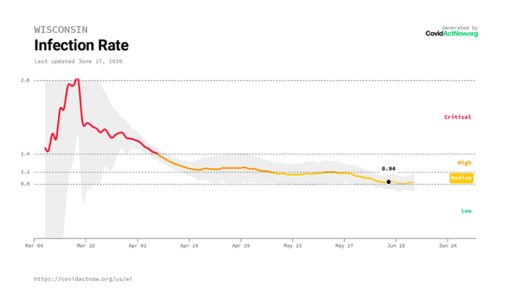James Tamplin (BSIE ’06, MSIE ’07) was on the lookout for his next professional challenge in late February 2020 when he visited his friend and former Google coworker Max Henderson in Lake Tahoe. The two had worked closely together after the tech giant acquired Tamplin’s startup, Firebase.
 James Tamplin
James Tamplin
The conversation turned toward the then-nascent coronavirus outbreak in the United States. Henderson, who had worked in data science at Google, was worried enough about the approaching pandemic that he had begun to develop a rudimentary model to project the virus’s spread. Within a few weeks, Tamplin and a handful of fellow veterans of the Silicon Valley tech scene were helping Henderson turn a dense spreadsheet full of data into a visually appealing and easily understandable website.
“It kind of took off from there,” says Tamplin.
The resulting website, CovidActNow.org, bills itself as “America’s COVID warning system.” Featuring maps and data down to the county level, it uses four indicators—infection rate, positive test rate, intensive care unit capacity and contact tracing staffing—to generate risk levels across the United States.
The site drew roughly 8 million visitors in the first week after its March 20 launch, Tamplin says. Early on, the Covid Act Now team created projections for disease spread under several policy approaches, ranging from no restrictions to a full lockdown. States such as Michigan and Kentucky cited the group’s model in announcing their respective stay-at-home orders.
“We showed people pretty clearly—which wasn’t being done in late March—what each of these scenarios would mean to the hospital capacity in the local area, and I think it really hit home,” Tamplin says.
As part of the Covid Act Now leadership team, Tamplin has helped secure nonprofit status for the organization, worked on fund-raising from philanthropic foundations, and built out staffing by leveraging his connections from more than a decade working in Silicon Valley. Firebase, a development platform for mobile apps, was the fourth startup he cofounded. After Google purchased it in 2014, he worked as group product manager for the platform until late 2017.
 Covid Act Now tracks, among other data points, each state’s infection rate. Image courtesy Covid Act Now.
Covid Act Now tracks, among other data points, each state’s infection rate. Image courtesy Covid Act Now.
Now, he’s leading Covid Act Now’s go-to-market efforts, which involves both building awareness among the broader American public and informing local, state and national government officials.
“The objective here is to be America’s early warning system for COVID and build a national shared understanding, because unless we’re speaking the same vocabulary, it’s really hard to talk to each other,” he says. “Ultimately, it’s the folks in government who have the strings to really move the needle. We’ve been doing outreach in all 50 states and many of the 3,007 counties, just trying to help them with what they need and giving them data, good visualizations and customizable models.”
Tamplin says Covid Act Now, which has partnered with Georgetown University’s Center for Global Health Science and Security, Stanford University’s Clinical Excellence Research Center and the healthcare company Grand Rounds, runs like a tech startup and includes about 50 largely volunteer workers.
“It’s a bunch of very experienced Silicon Valley operators who really know how to efficiently run organizations and build technology,” he says. “I’ve been pretty proud of what we’ve been able to pull together in less than three months.”
Tamplin says the organization plans to integrate more data around case counts, hospitalizations and deaths while also enhancing its future projections to help the public and officials plan for the widely expected second wave of infections in the wake of lifted restrictions. The Covid Act Now team is also contemplating creating a more generalized set of tools that could help with future pandemics.
“Work doesn’t get much more meaningful than attempting to mitigate a pandemic,” he says. “There’s very few other times in your career where you can directly tie your work to human lives saved at such a scale.”